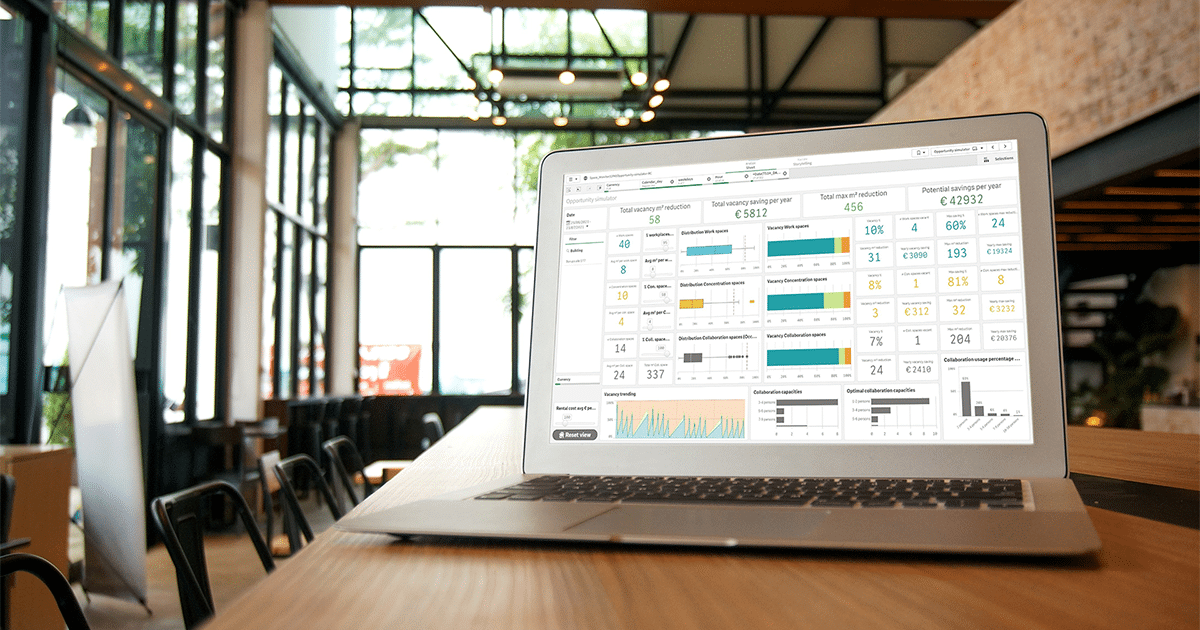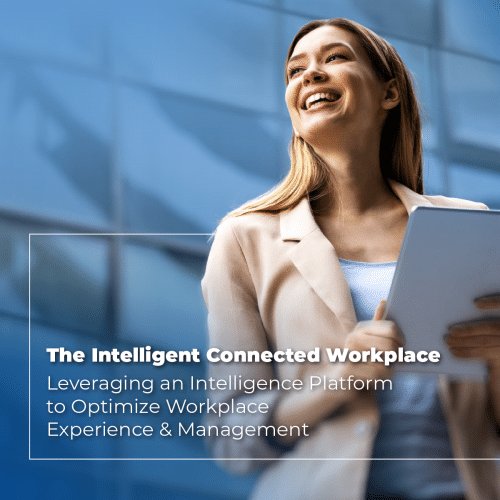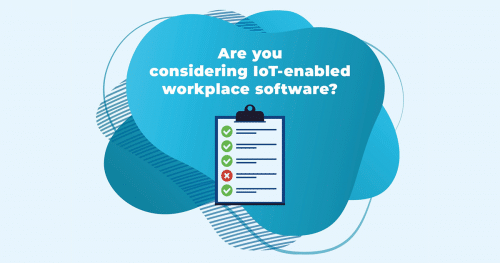Facility and workplace management is changing rapidly. On the one hand, there’s the growing role of technology, cloud, and IoT, enabling more advanced workplace data analytics. On the other hand, the pandemic has brought about a shift to hybrid work, which is accelerating existing flexible workplace trends. To be successful in this new world of hybrid work, real estate and FM teams require detailed, up-to-date information. That’s where the IoT comes in. Because sensors are obviously much better than humans at collecting granular data, at scale, in real-time.
Workplace analytics and real-time data
All this has an impact on how building data is collected, stored, processed, analyzed, and visualized. Workplace management software today is being augmented with real-time data streams. This big data – and the insights derived from it – enables facility managers to better understand how occupants use various spaces. And what the ambient conditions are in these spaces, including the indoor air quality.
Big data, big difference
But working with big data from sensors – in combination with various other data sources – is fundamentally different from traditional FM data processing. It requires a big data IoT platform that can handle structured, semi-structured, and unstructured data, arriving in large volumes and with high velocity.
In traditional FM data mining, the data sets are usually small and static. The data format is simple and fits in a relational database or data warehouse.
When analyzing big data, on the other hand, the data often comes from multiple, heterogeneous sources. Data formats are more diverse and likely will not fit in a relational database. The data may be greatly interconnected, dynamic, and evolving. Relevant data may be hidden amidst a lot of useless data. And traditional visualization techniques may not work well.
What this means is that if you deploy traditional FM software and then add some sensor data ‘on the side’, you’re setting yourself up for failure. Because sensors are only part of the solution. And because traditional FM software (IWMS) was never built to process and analyze extensive amounts of volatile data.
The capabilities of your IoT platform and the quality of the analytical tools determine the value you get from the Building IoT. The right IoT workplace analytics platform will turn raw data into useful insights. What’s more, it will enable you to truly understand the dynamics of what goes on inside your buildings. Therefore, choosing the right analytics platform is just as important as choosing the right sensors.
Connectivity is key
To optimize data access and availability, a modern Building IoT platform will need to connect with legacy systems such as building management systems (BMSs), access control, and wired/wireless sensors. This is enabled through application programming interfaces (APIs). With an IoT analytics platform that is sensor and BMS neutral – and has a strong ecosystem of software and hardware partners – you will be able to benefit from the latest and greatest in terms of sensors.
Read more: Verdantix Benchmark Reveals Four Leaders in IoT Platforms for Smart Buildings
Workplace data analytics: static vs. dynamic
Traditional dashboards show aggregated data in a static way, as ‘read-only’ information. These static dashboards do not enable workplace leaders to mine the data and understand correlations. Such dashboards may look cool at first sight, but they offer only limited insight.
To make the data serve a real purpose requires a different type of analytical tool – one that offers a dynamic view of the full data. Advanced workplace analytics dashboards adapt dynamically when you change any of the parameters. You can start high level, click through the data, and zoom in until you get to the level of detail required.

Making insights actionable
In building and facilities management, an IoT analytics platform has a lot to gain from being integrated with operational software, such as IWMS. Why is that? Because both types of software platforms thrive on quality data, whether that’s IoT sensor data, rich asset and spatial data from BIM, maintenance planning and history, or current occupancy and room reservations. Traditional IWMS automates processes with decision trees, workflows, statuses, and notifications, but mostly still needs a person to initiate the process. For example, by logging a ticket or service request, when something malfunctions. By using ‘brain rules’, the IoT platform can trigger processes without necessitating human intervention. For instance, a reserved room is released for others to use after occupancy sensors have not detected any presence for 15 minutes. Or a technician receives a work order to check the HVAC after a pre-set fault detection threshold has been exceeded. Door count sensors installed at the entrance to a bathroom may be used to trigger cleaning or refills when utilization reaches certain thresholds. Or, if a reservation was made but no one showed up, the sensor data could be used to notify cleaners that the work order need not be filled. Clearly, there are numerous ways in which service providers can benefit from augmenting facility operations with real-time data.
Real-time & mobile information

Workplace leaders will mostly want to look at data over time, to gain insight into usage trends. For both occupants and service providers, however, live data is extremely useful. An advanced workplace analytics platform can overlay data on digital floor plans. This can be information about current space occupancy, for example, but also comfort data. Building users can then immediately access this information on their smartphone or via other touchpoints, like kiosks or meeting room displays. That makes it easier for employees to navigate a flexible workplace and quickly find (and book) suitable spaces and resources. When employees have easy access to this type of real-time mobile guidance, they don’t lose time and can have a more productive workday.
Real-time information, on the go, is also beneficial for FM teams, who move around buildings a lot. A smart service app combines scheduled tasks with service requests and sensor-triggered interventions with all work orders prioritized and shown on floor plans. With such a tool, FM crews can dynamically manage their daily work and respond to real-world events when they occur.
Read more: Workplace App: live sensor data on digital floor plans
Effective portfolio decisions

Advanced workplace analytics can support both real-time operations and long-term strategy. It provides insight into workspace utilization and enables real estate and workplace executives to make data-driven decisions for their future office space needs. Using sensor technologies to monitor occupancy for space planning (Watch an explainer video) is not new. But the pandemic and the rise of hybrid work have raised the stakes. To help organizations right-size their offices and reduce portfolio costs, Spacewell developed the Opportunity Simulator. This dashboard enables real estate teams to run space simulations and get a clear idea of their potential financial savings.
Read more: Opportunity Simulator: Right-size your office space!
Are you already leveraging your building data to enable new scenarios? Do you have the insights you need to make informed portfolio decisions, with confidence? Do not hesitate to contact us to explore the possibilities.










